Tides - Kunstmuseum Solothurn, 2023
Auricular whorl (2023) ceramics, around 30 x 40 x 70 cm, partially glazed. Installation with jurassic marl
textTides, curated by Meret Kaufmann, Kunstmuseum Solothurn, 17. September - 31. Dezember 2023
The sticks planted in the ground within the caldera at Nisyros mark the area that is safe to enter. As if the natural world were a thing to be plotted and gridded, in order to be experienced. The volcano’s sulfurous detritus is not visible, but is implied by a fluorescent yellow jug in the foreground of the image, playfully marking the presence of volcanic matter in this location.
Dimitra Charamandas uses color like a poisonous animal. With blots of yellows and trails of terracotta reds, she draws our attention to the duplicitousness of nature, whose brightest and most alluring displays can be its most fertile, or its most deadly. Embarking on coastal walks as a form of embodied outdoor research, she uses the familiar features of the landscapes she observes to chart an inner landscape of emotions, in which tactility and touch appear as the first traces of a politics of care.
In this landscape, the painstaking attention required to tend something from inception to fruition moves beyond being a thankless feminine virtue, and becomes a strategy of resistance against an increasingly transactional world. In this landscape, our bodies are vehicles of agency, time is an infinite resource, and every minute task is worthy of our undivided attention.
It is through the body that we experience a landscape, and it is of the body that we speak when we speak of it: the foot of the mountain, the mouth of the river, the belly of the earth. The center of a storm is its eye, a tree’s branches are its limbs. We transpose our understanding of the functions of our bodies, what they strive for and desire, onto the environment around us, ascribing an intentionality to its events.
But nature is not merely incremental changes across millions of years of evolution, it is also the sudden chaos of the wildfires that have ravaged the countries of the Mediterranean this past summer—the hottest the planet has ever experienced. Images of beachgoers looking out to sea, swimming with their backs turned to blackened shores fill the news. How do their bodies, suspended in the non-place of the sea, relate to the environment around them? What do our individual bodies have to do with the collective—that metaphorical body politic which can be mobilized and moved to action?
This is a question of proximity and scale; two of the tools Charamandas employs to render familiar landscapes alien, and conversely, to create a sense of intimacy between our bodies and coastal paths we have never walked. A cross section of a sea sponge fills the frame, resembling a knot of intestines; the ridges of a small rock look like the spine of a mountain range. The cochlear shape of a shell lying in the sand—a spiral maze of crevices offering shelter to a soft spineless body—resembles that of the human ear; ossicles, drum and auditory canal, turning vibration into wondrous sound.
Shorelines are landscapes of liminality, transitory spaces that, like the membranous surfaces and orifical shapes that recur in Charamandas’ work, act as entry points. Shorelines demarcate what we know; providing a visual limit to that which is tangible, and acting as stages where dreamers can rest their eyes as they ponder an elsewhere.
From a shoreline, the Phoenician princess Europa gazed across the sea—so the myth goes—before she was taken unwillingly across its waters to the continent which would become her namesake. Thousands today risk their lives to make the same unwilling journey to Europe, driven by desperation to will their bodies across the sea. In Lesbos, where many asylum seekers were previously housed in the Moria refugee camp, Charamandas walked across the island as the final point in a six-month journey across Greece—touching the outermost point of the Aegean, where it bleeds into the Mediterranean. Islands are porous landscapes from which events, ideas, and people seep outwards easily enough.
In Luce Irigaray’s writings on water’s amorphous qualities as a manifestation of the feminine, she uses it as a metaphor to disrupt traditionally “masculine” philosophies resting on rationality. She writes: “The sea shines with a myriad of eyes. And none is given any privilege. Even here and now she undoes all perspective. Countless and shifting and merging her depths. And her allure is an icy shroud for the point of view.” A similar affinity with the feminine runs through Charamandas’ work, not as a counterpoint to rationality, but as a perspective that privileges the generative powers of fluidity and liminality.
The liminal space of the shoreline is where two worldviews overlap, the rational and the intuitive, the physical and the emotional. The veil between body and mind is lifted by something as simple as a cool sea-breeze, and, momentarily, we believe we are attuned to the sublime. A physical sensation becomes a feeling, which, wavelike, swells into something we might call an experience when we describe it in the future—an embodied kind of knowledge that rolls over that which is plotted and gridded.
A myriad of eyes, Lara El Gibaly for the publication to Tides, Pale Shapes Of Livers And Kidneys
Special thanks for the exchange, the support and the collaboration on various levels to Katrin Steffen, Meret Kaufmann and the technical team of Kunstmuseum Solothurn around Til Frentzel, to Regula Charamandas, Luca Mengisen, Zoe Vaistij, Martina Meier, Eleni Riga, Lara El Gibaly, Stefan Lorenzutti, Anita Mucolli, Laurie Mlodzik, Basim Magdy, Joshua Jörin, Marcel Freymond and Elena Freymond Lazarova, Johanna Schaible, Dimitra Konstantinidis, Irene Trujillo, Andrea Perales Covarrubias, Chus Martínez, Claudia Müller, Sabina Medici
A big thank you to Swisslos-Fonds des Kantons Solothurn, Stiftung Baloise Bank AG, Däster-Schild Stiftung, Walter Borrer-Stiftung as well as to Raffinerie, Zürich, Videocompany, Zofingen, Zumstein & Cie., Basel, Egger AG, Solothurn, Alba GmbH, Solothurn, and Kyriles, Solothurn
Documentation by David Aebi, Stefan Holenstein, Dimitra Charamandas
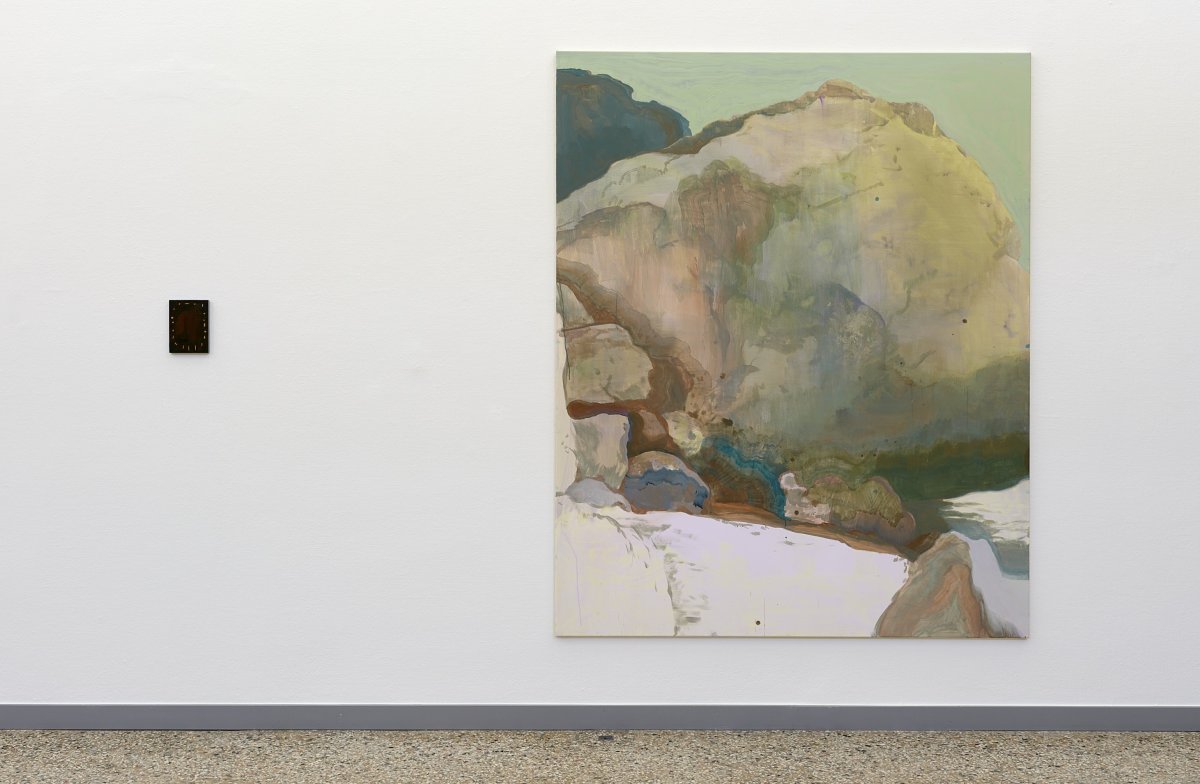
Left side: Ritual (Quiet agreement) (2023), 19 x 13 cm, acrylic and shellac on wood, right side: Inland body of water (Edge) (2023), acrylic on cotton, 210 cm x 170 cm
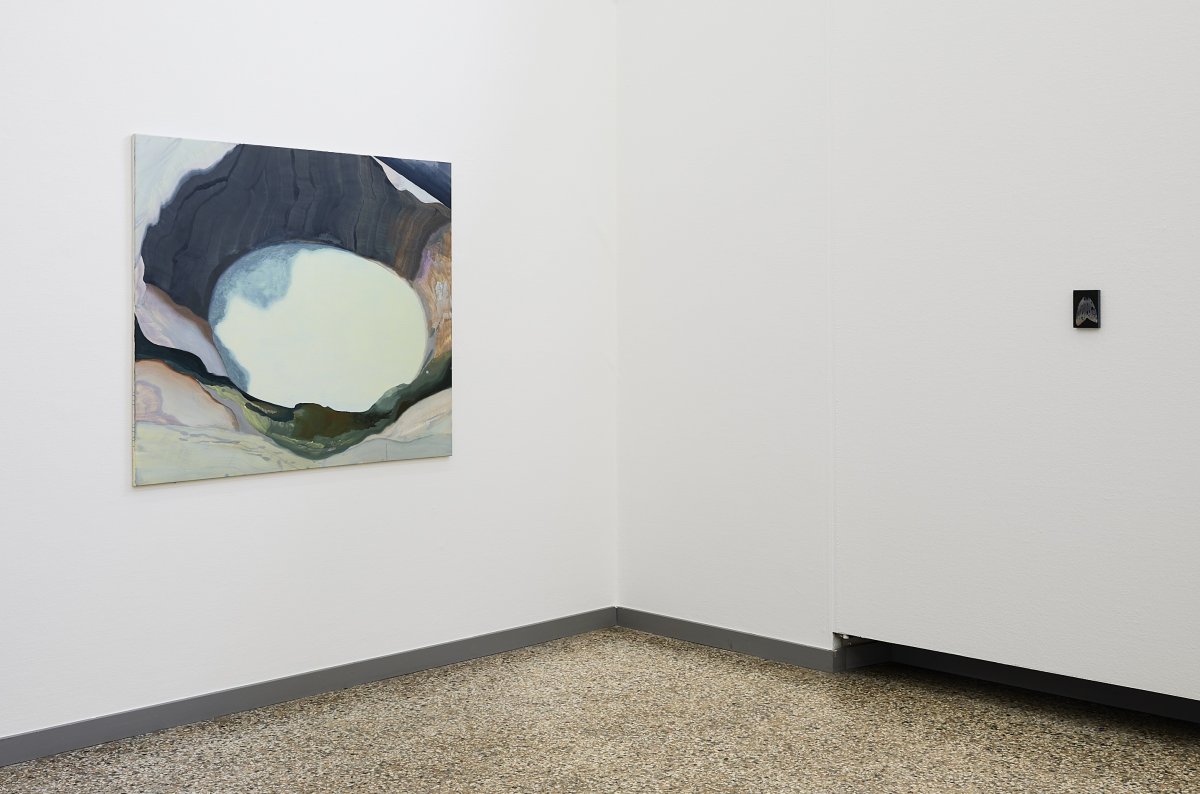
Left side: Mouth (2023), acrylic on cotton, 120 cm x 140 cm, (From the ongoing series Calderas, 2022 –), right side: Moth (2023), 13 x 9 cm, acrylic and shellac on wood
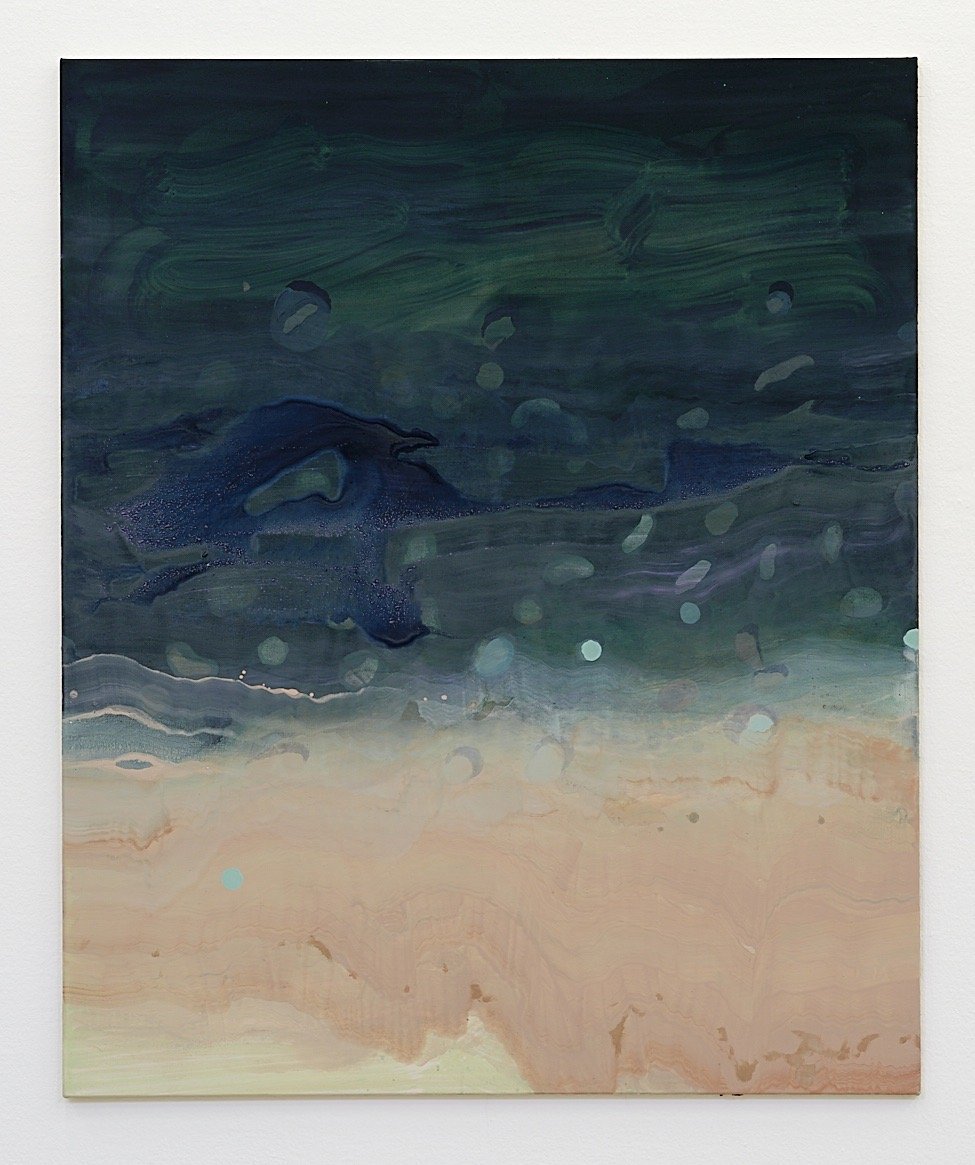
Milieu (Fireflies) (2023), acrylic on cotton, 140 cm x 120 cm
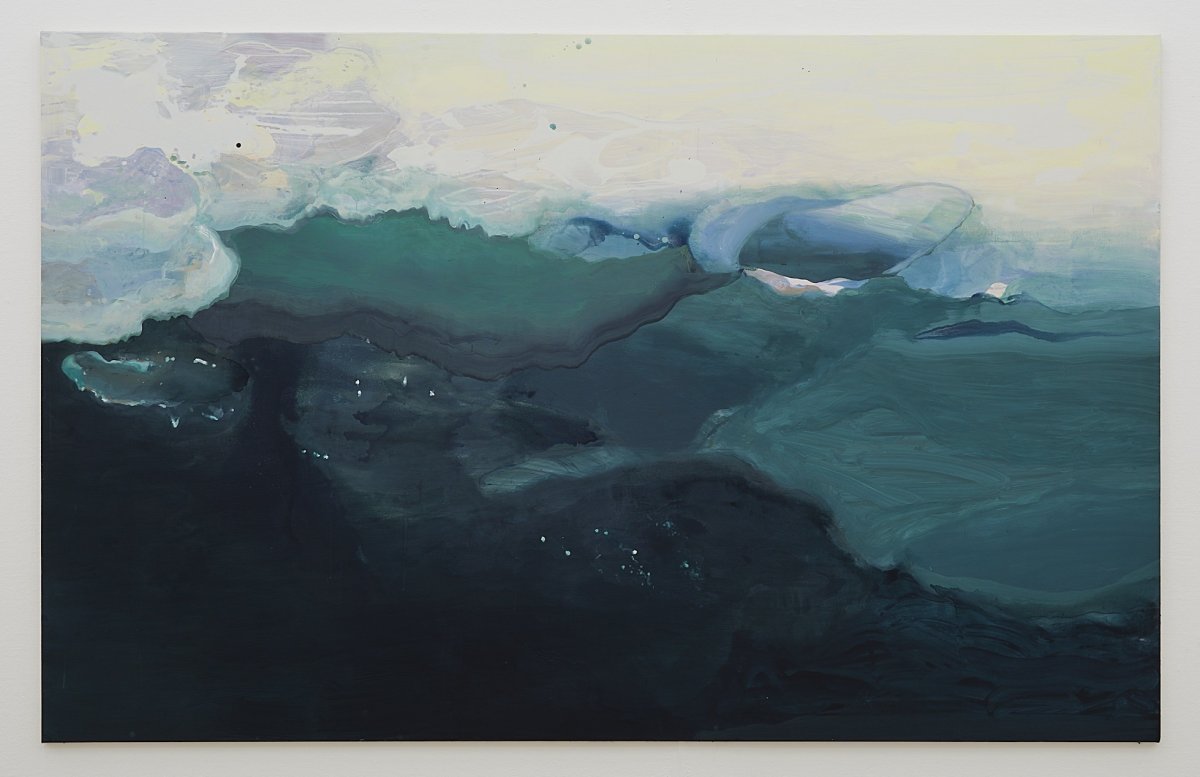
Shifting alliances (2023), acrylic on cotton, 190 cm x 300 cm
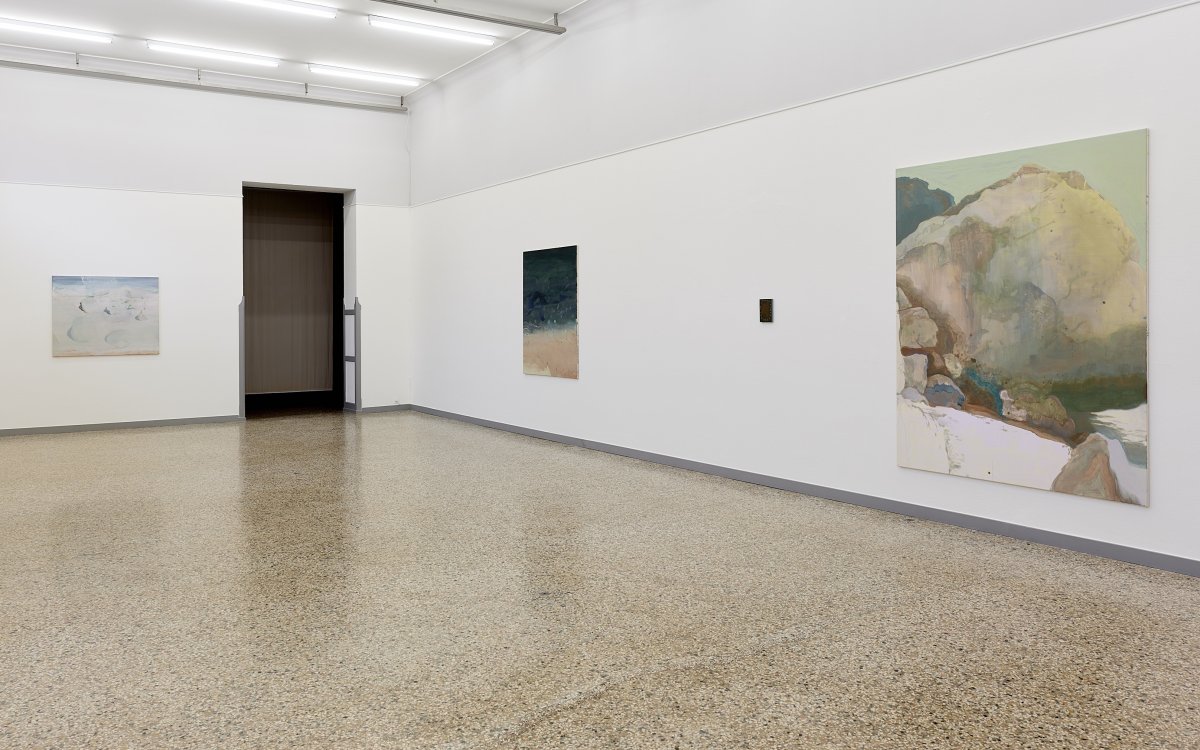
Installation view of Tides, Kunstmuseum Solothurn. Left side: Peak, acrylic on cotton, 100 cm x 120 cm
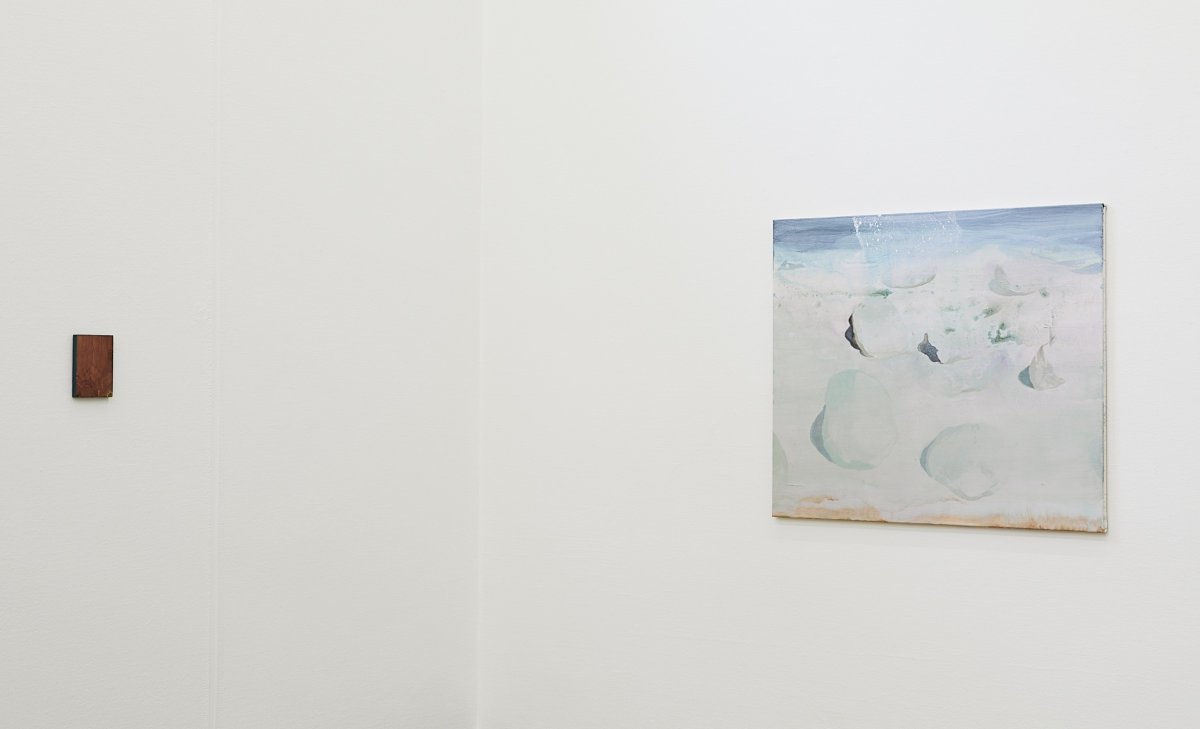
Left side: Earth (2023), 19 x 13 cm, acrylic and shellac on wood, right side: Peak, acrylic on cotton, 100 cm x 120 cm
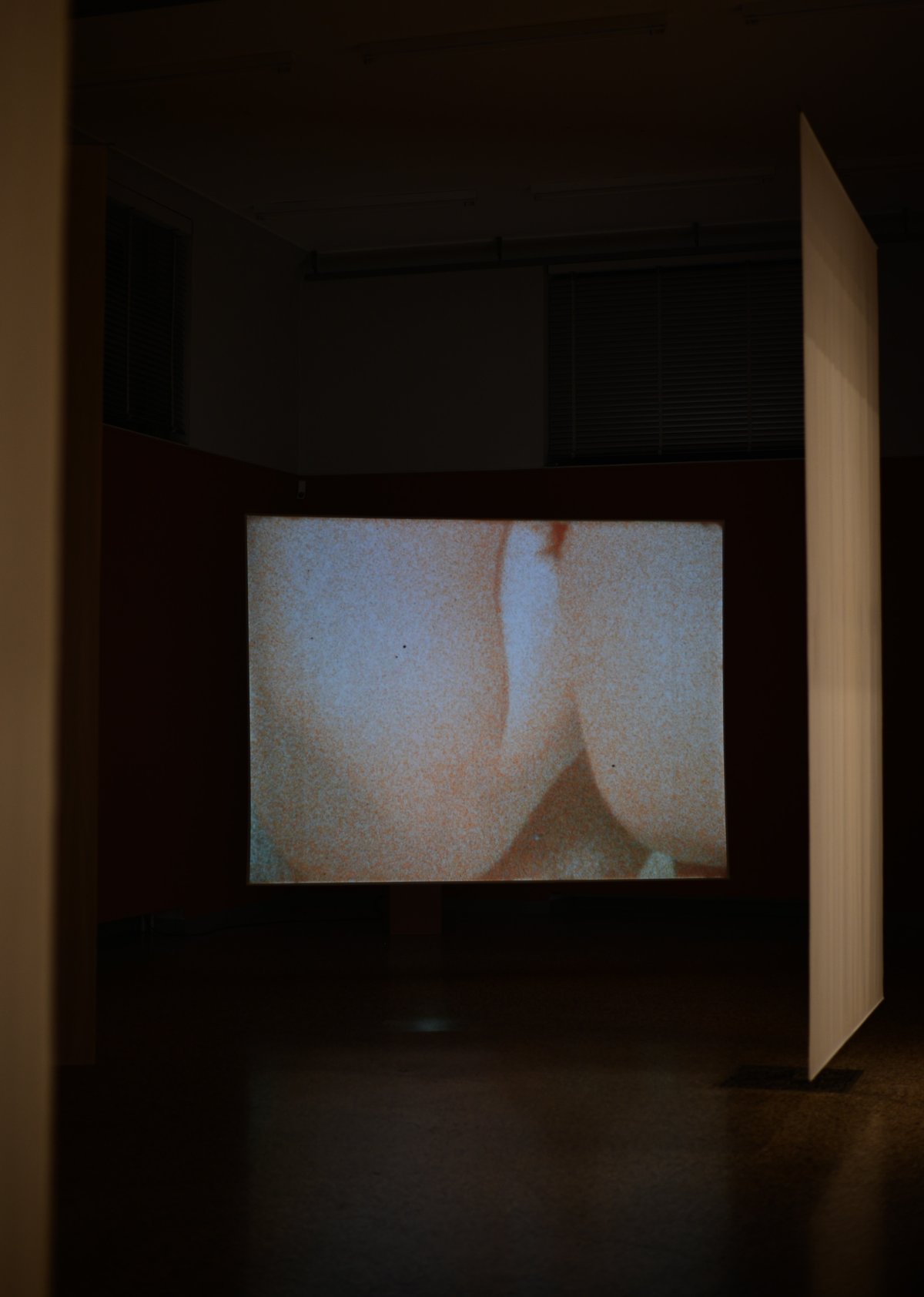
Farther back fluffy hairs /Sway suspended like seaweed - Sand (2023), digitalized super8 film, looped, projection, foil, steel
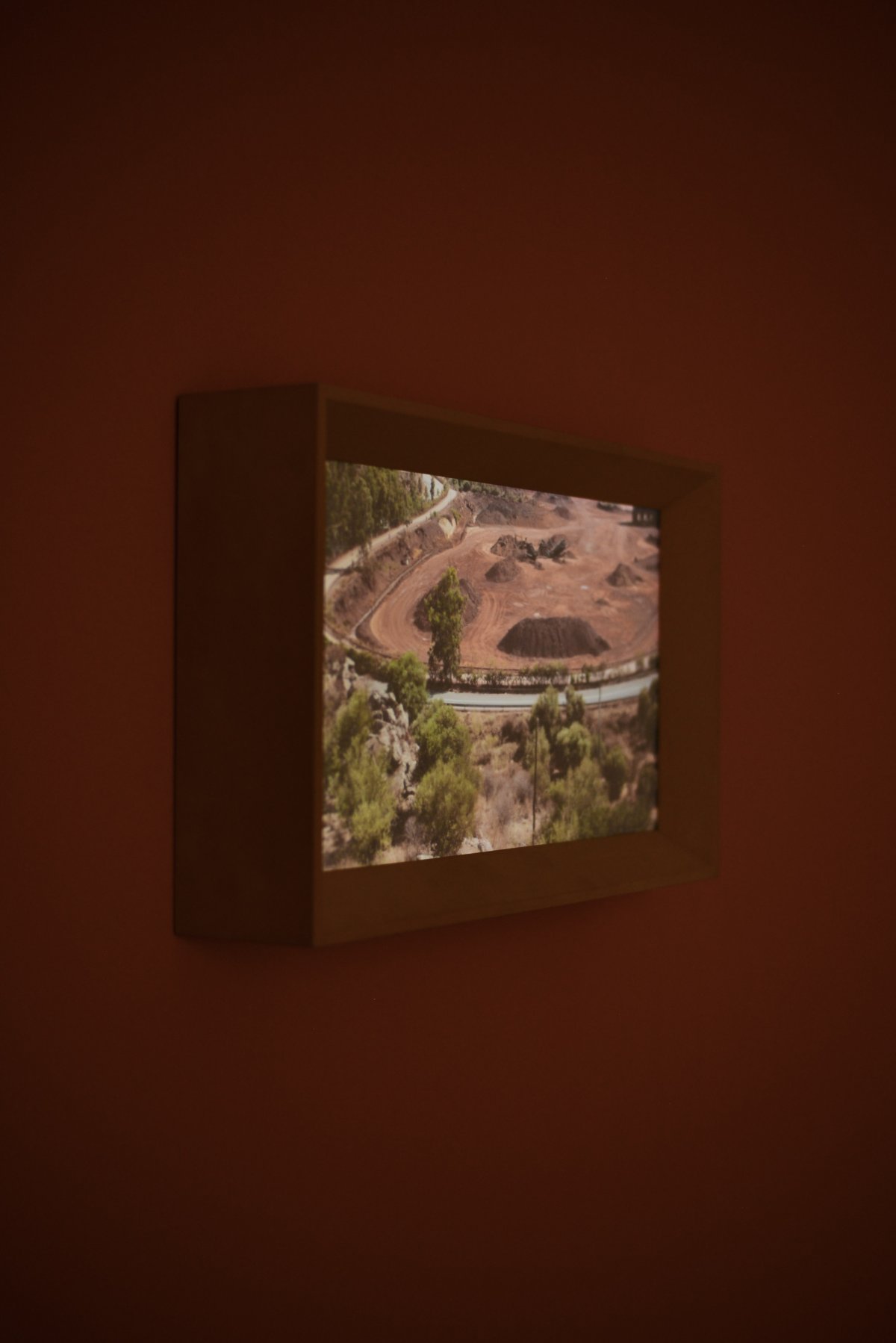
Orebody (2023), digital film looped. This and following work: From the collection of moving image fragments for the short film Sun Burn (Greece, 8’, to be released Nov 2023), Cicada Collective (Dimitra Charamandas, Julie Olympia Cahannes, Irene Trujillo, Luca Mengisen)
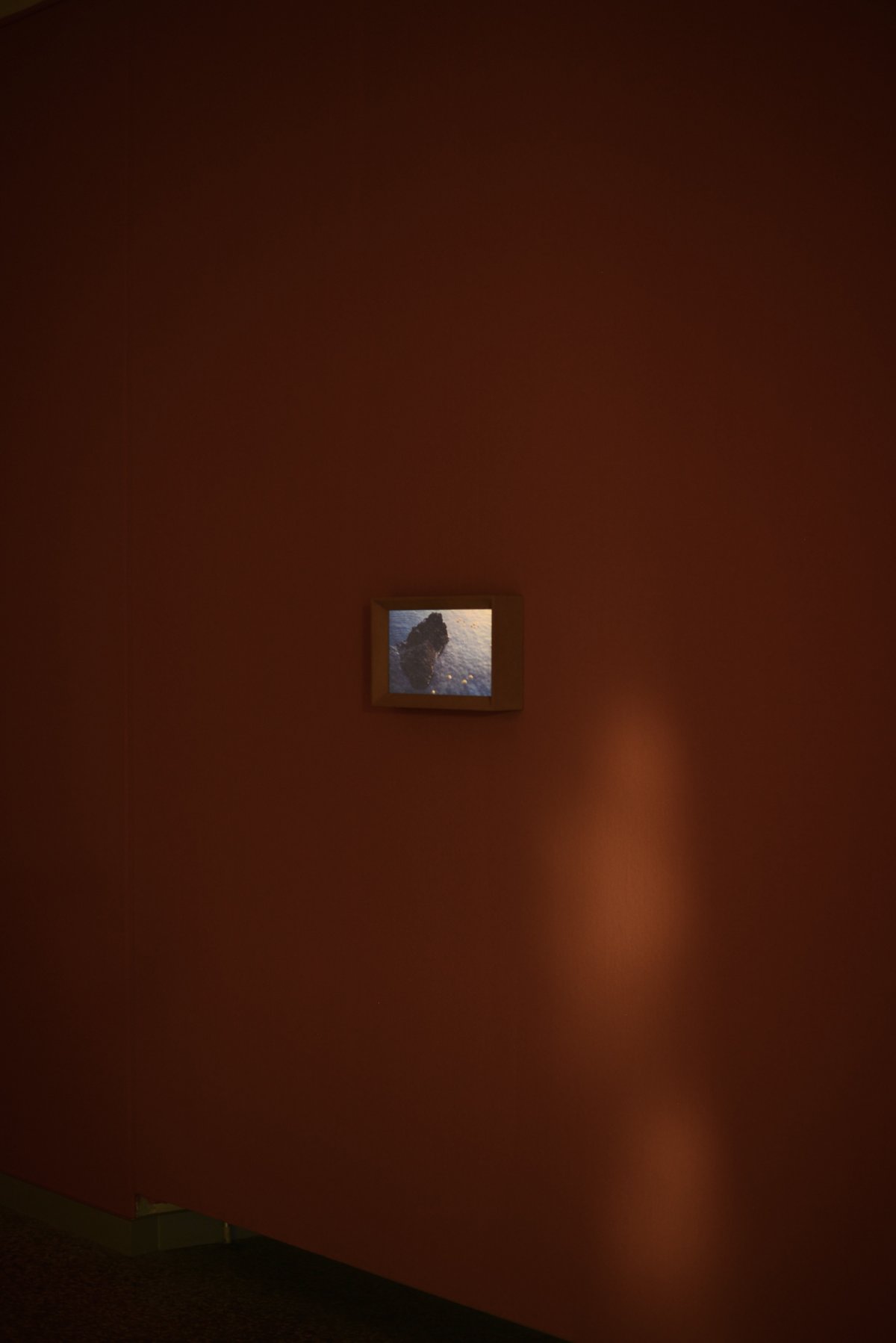
Kólpos (Gulf) (2023), digital film looped

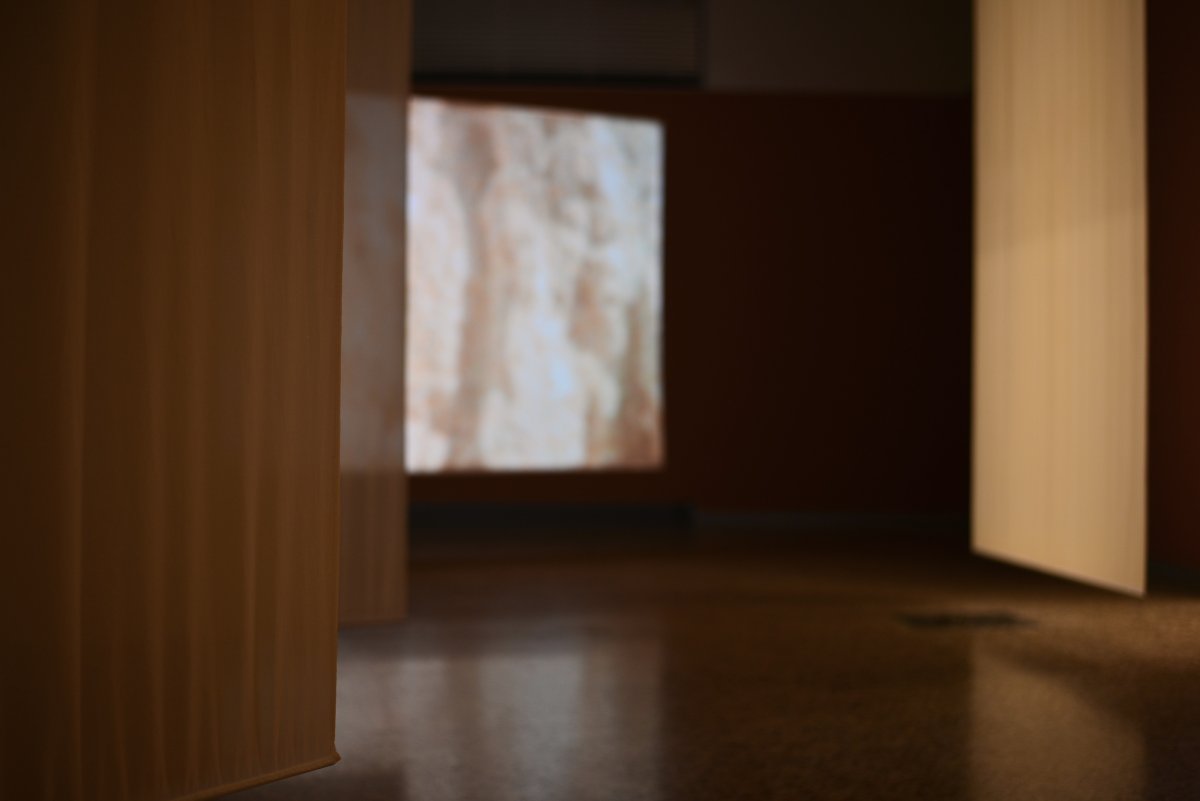
Membranes, textile installation, voile, water ink, raw steel

Installation view Tides, Kunstmuseum Solothurn
Auricular whorls (2023) ceramics, various sizes, partially glazed. Installation with jurassic marl

Caldera, heat (2023), acrylic on cotton, 183 cm x 430 cm, Crest (2023) ceramic, around 30 x 40 x 65 cm, burned and glazed
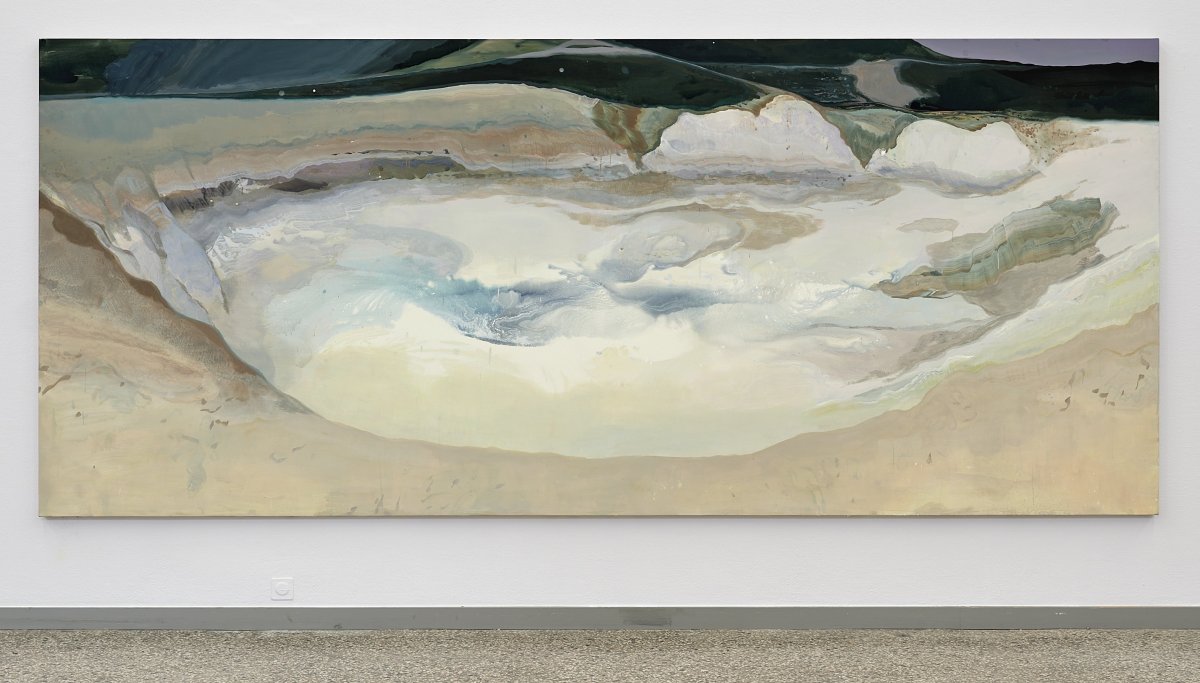
Caldera, Heat (2023), acrylic on cotton, 183 cm x 430 cm
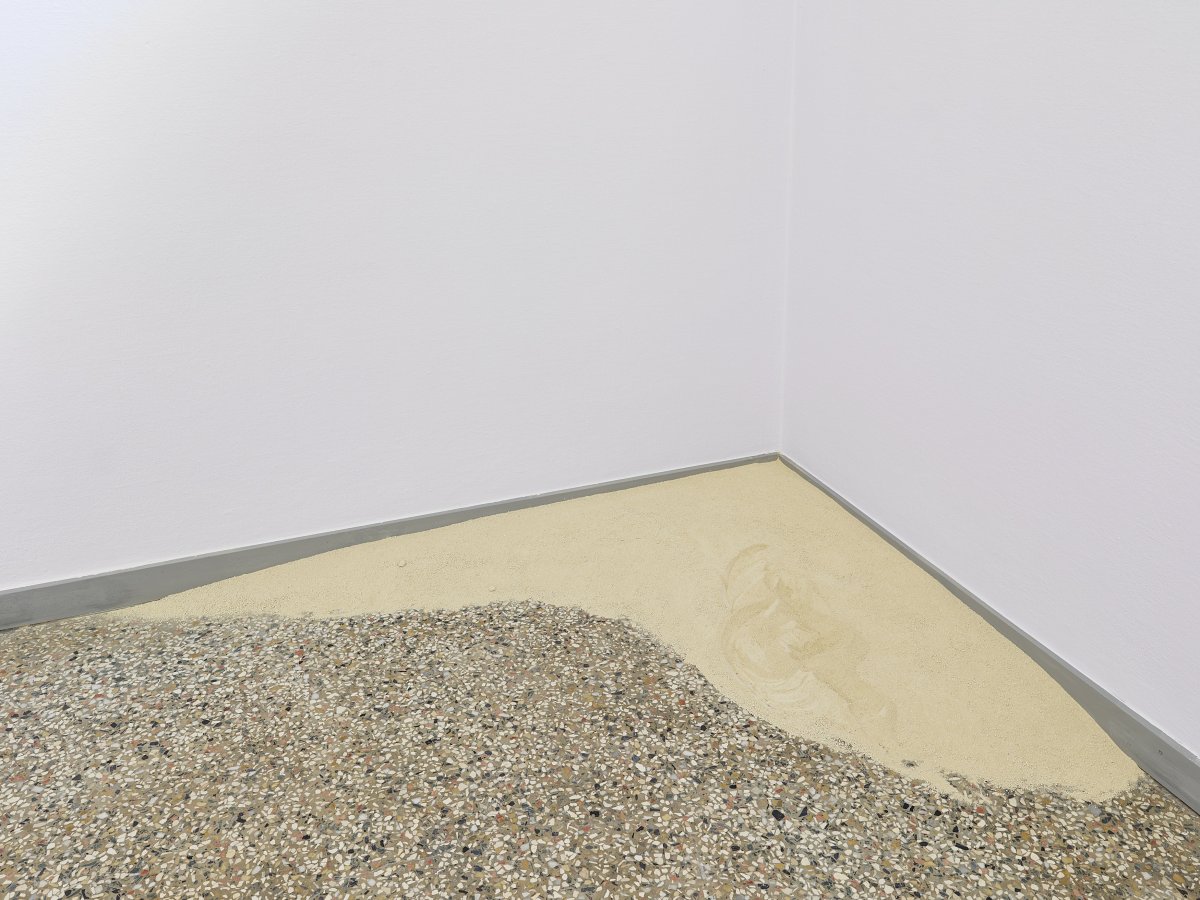
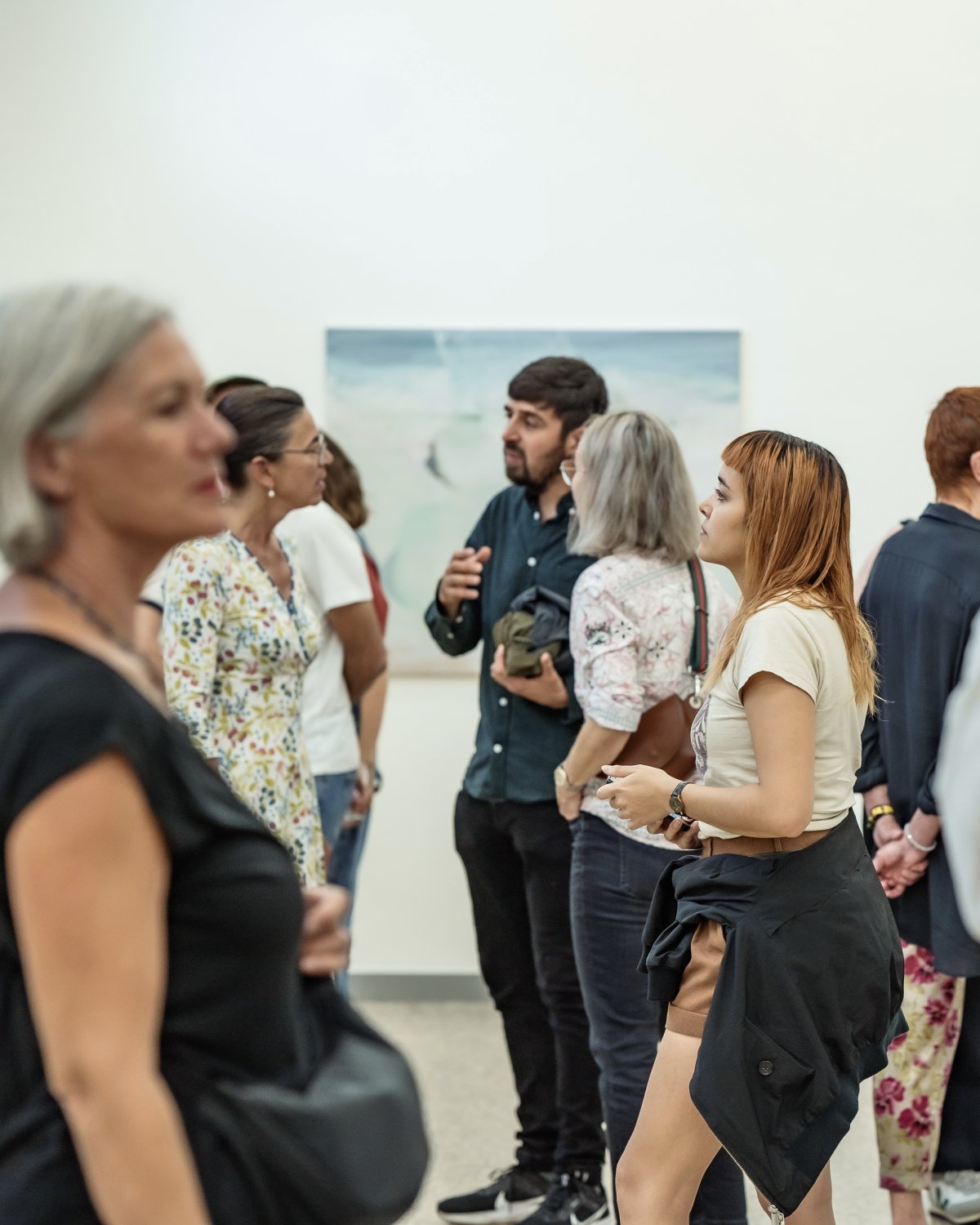
Opening of Tides, Kunstmuseum Solothurn, September 2023. Documentation: Andrei Oros
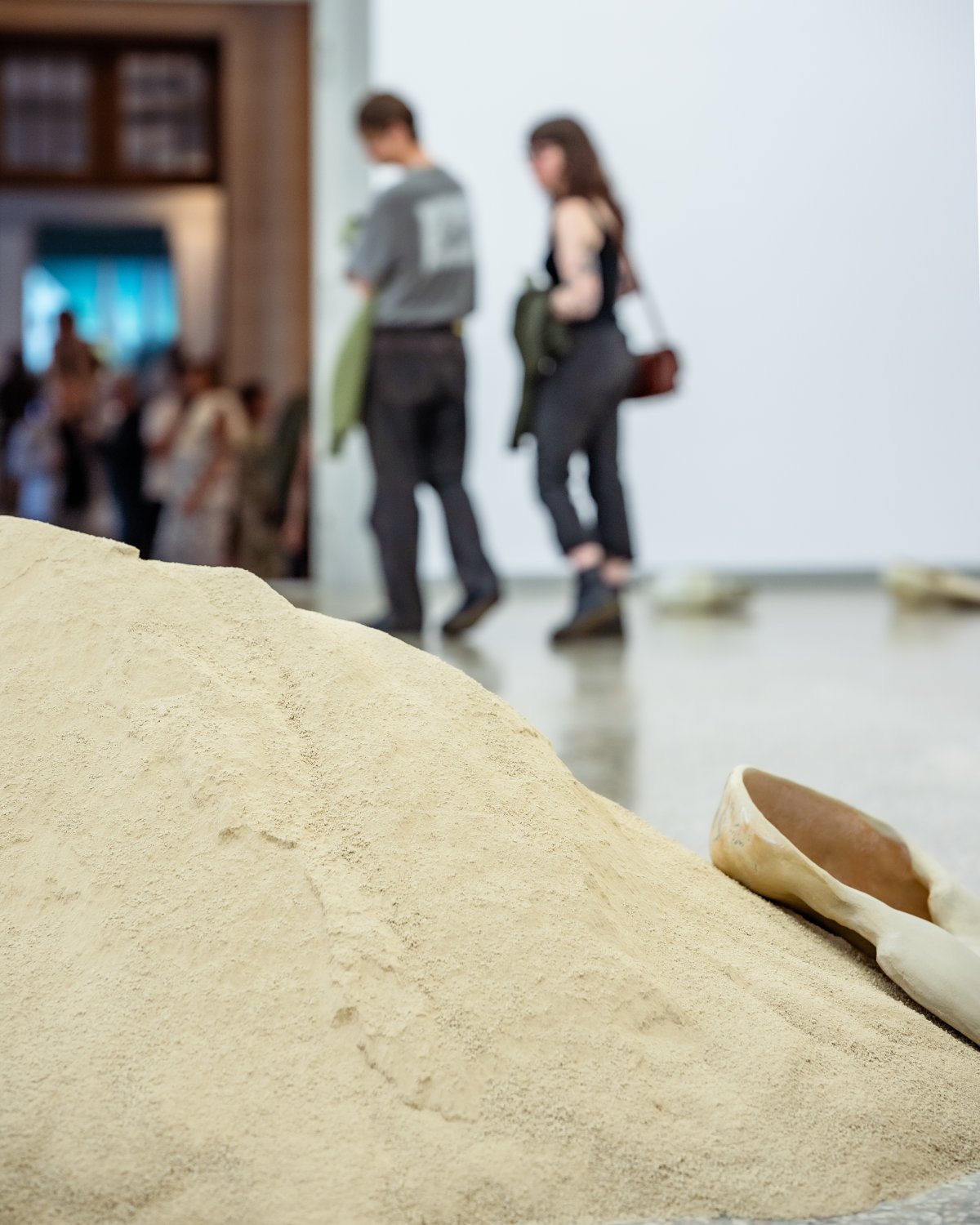
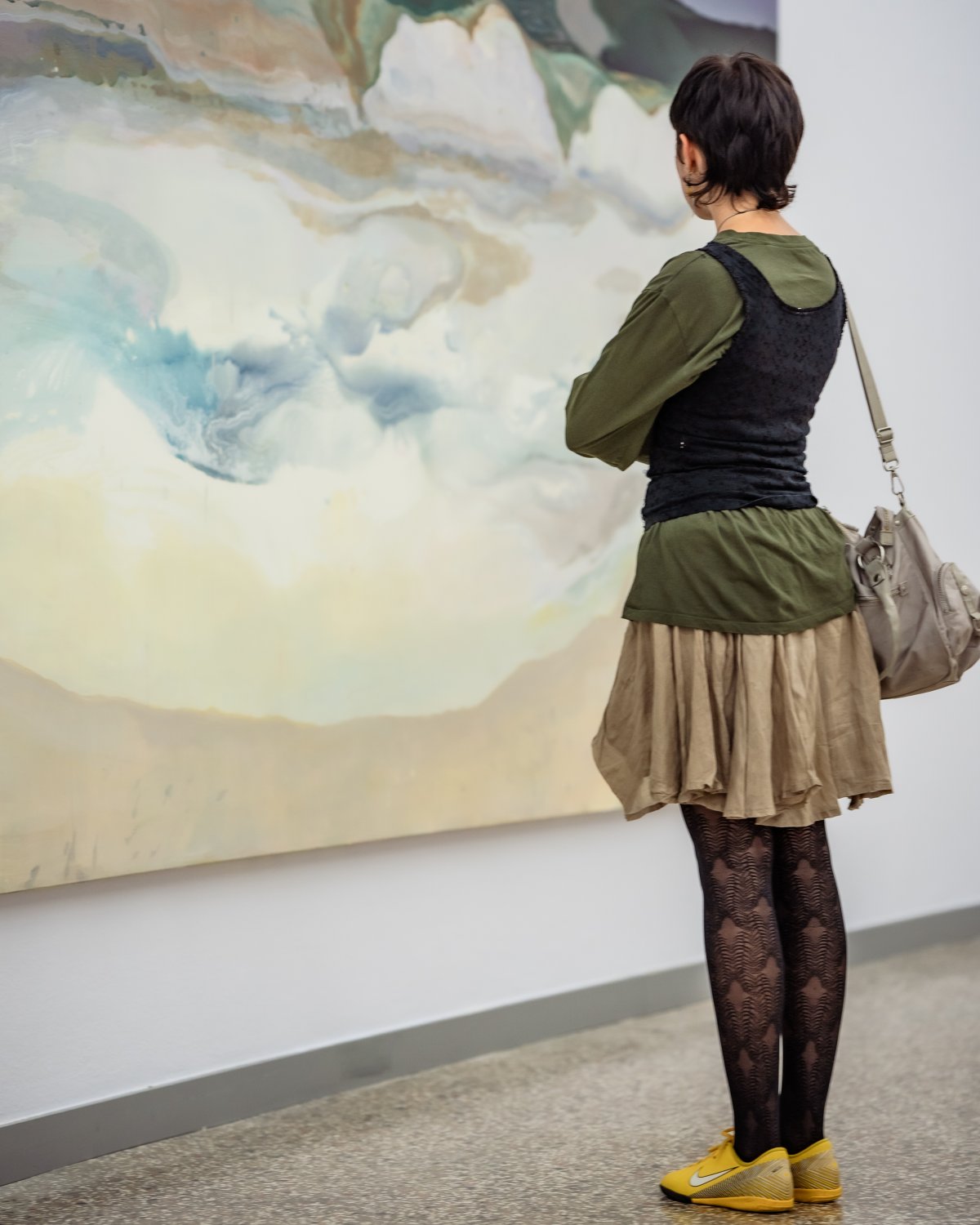
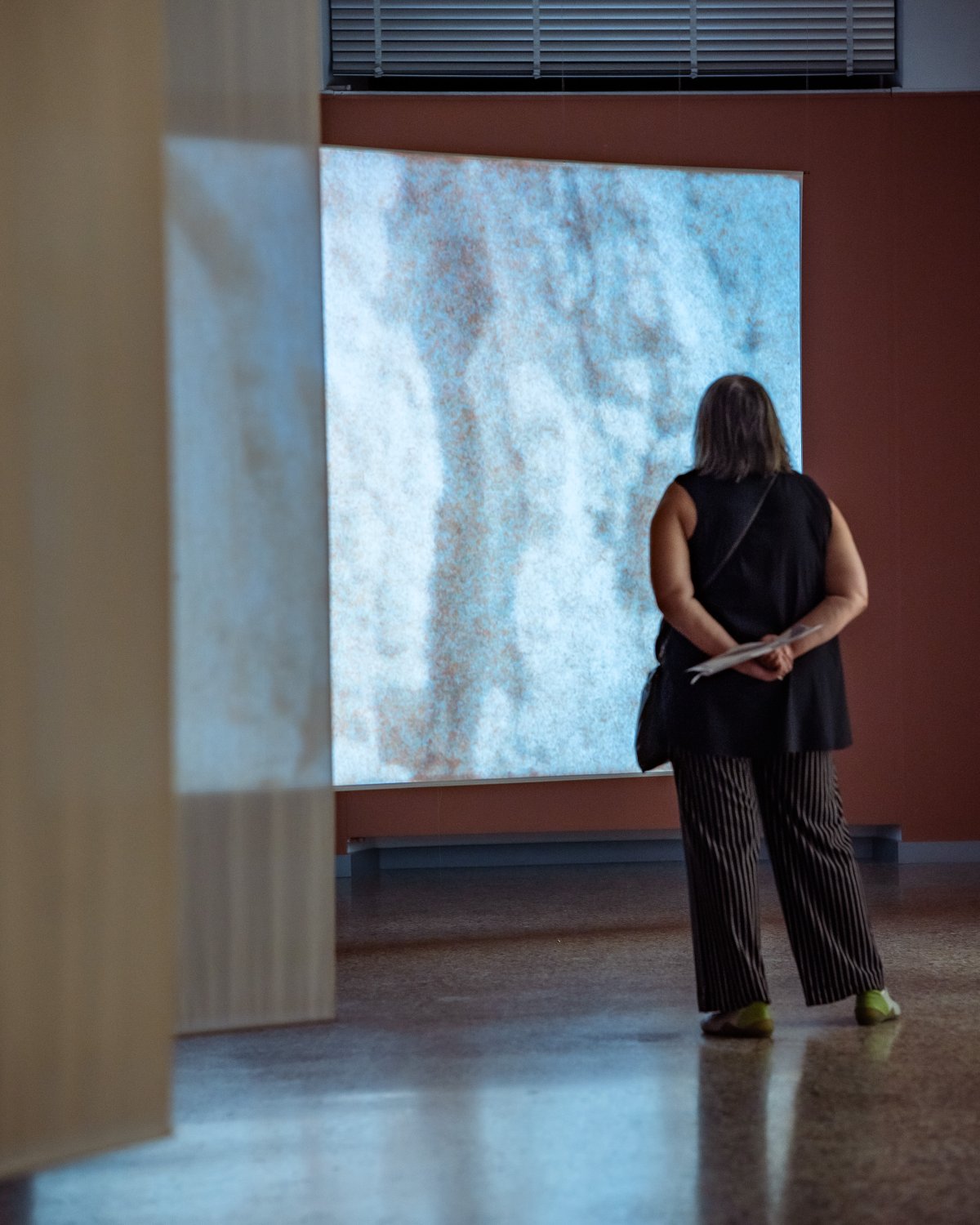
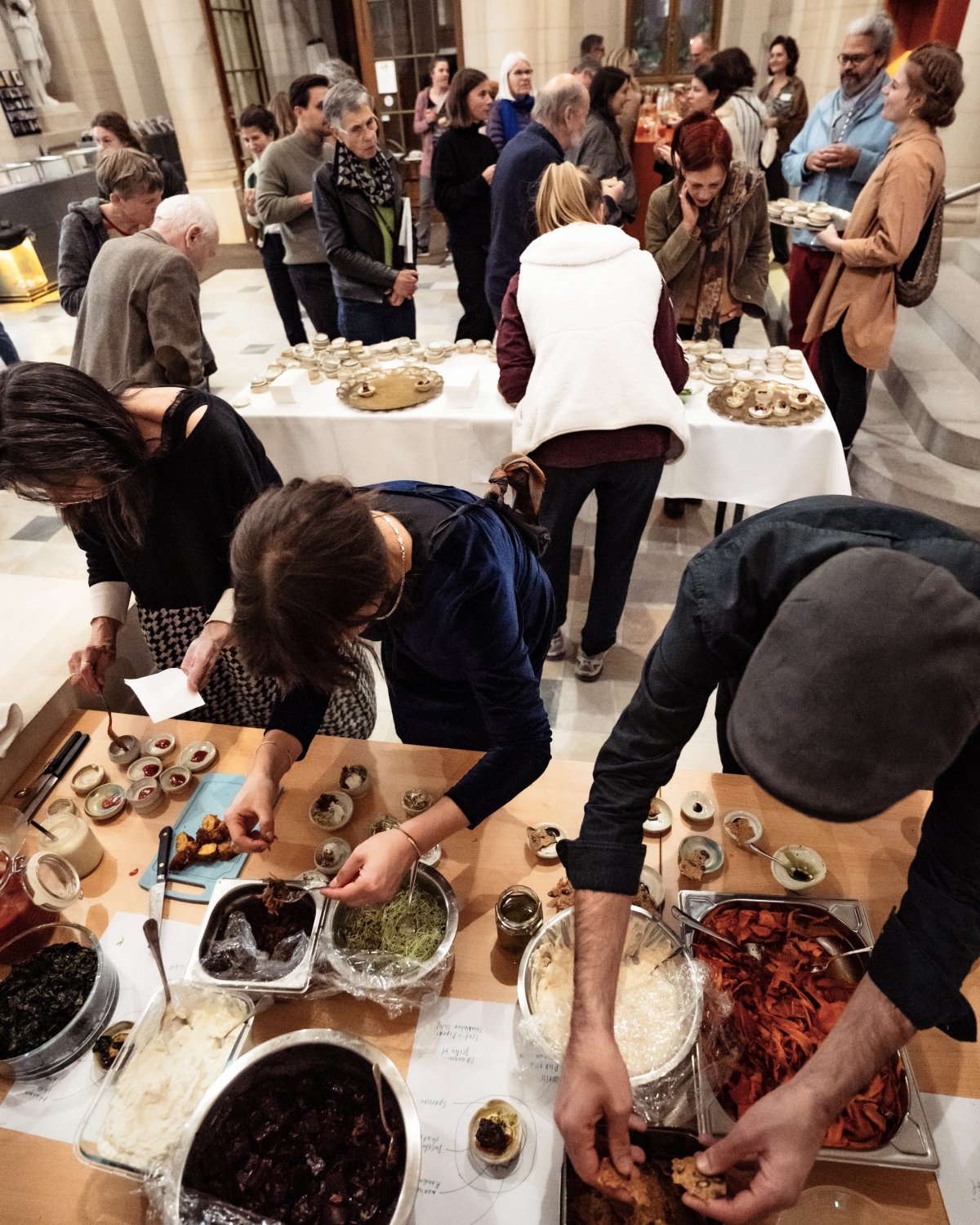
Bittersweet treats at the release of the publication Pale Shapes Of Livers And Kidneys at Kunstmuseum Solothurn in October 2023.
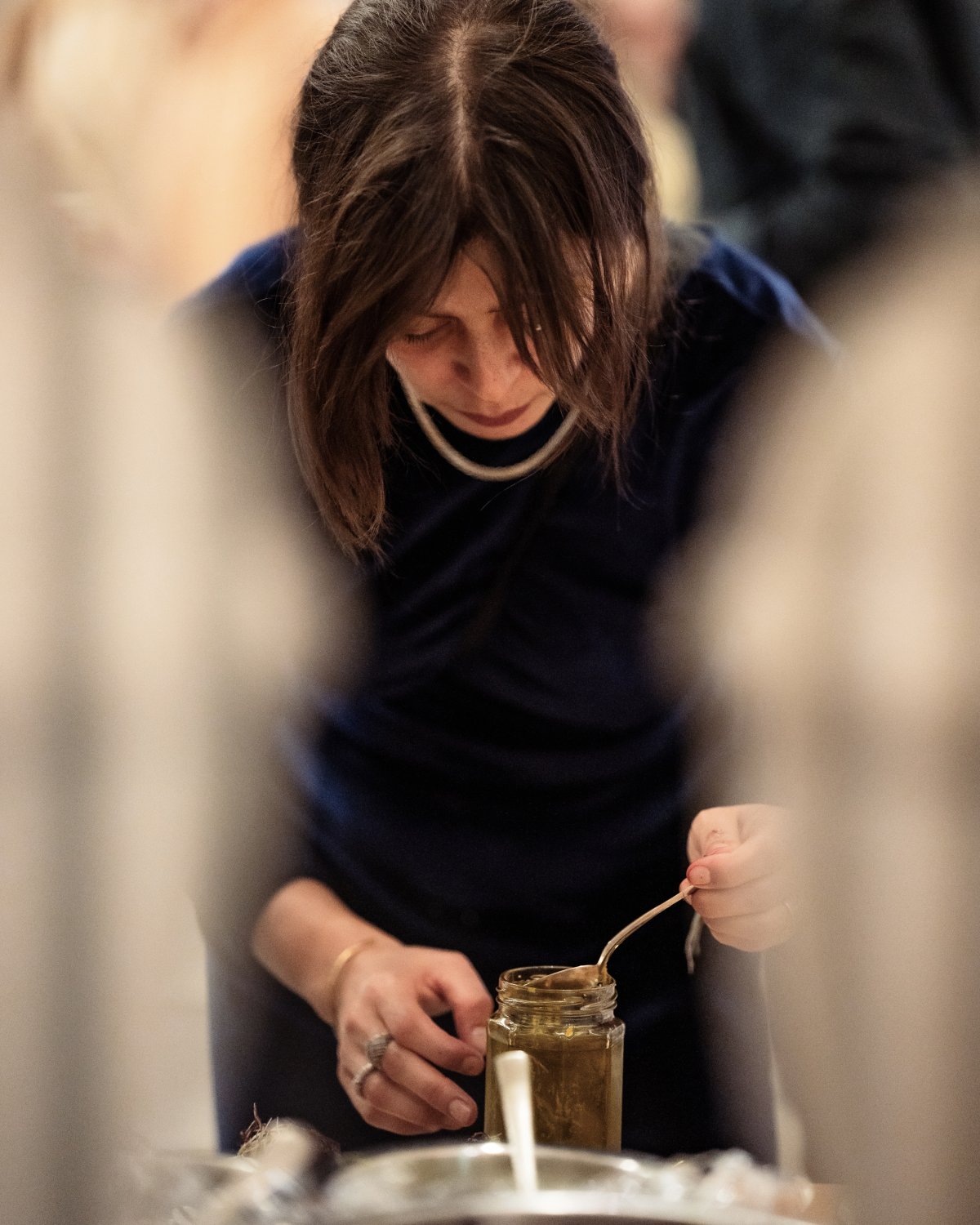
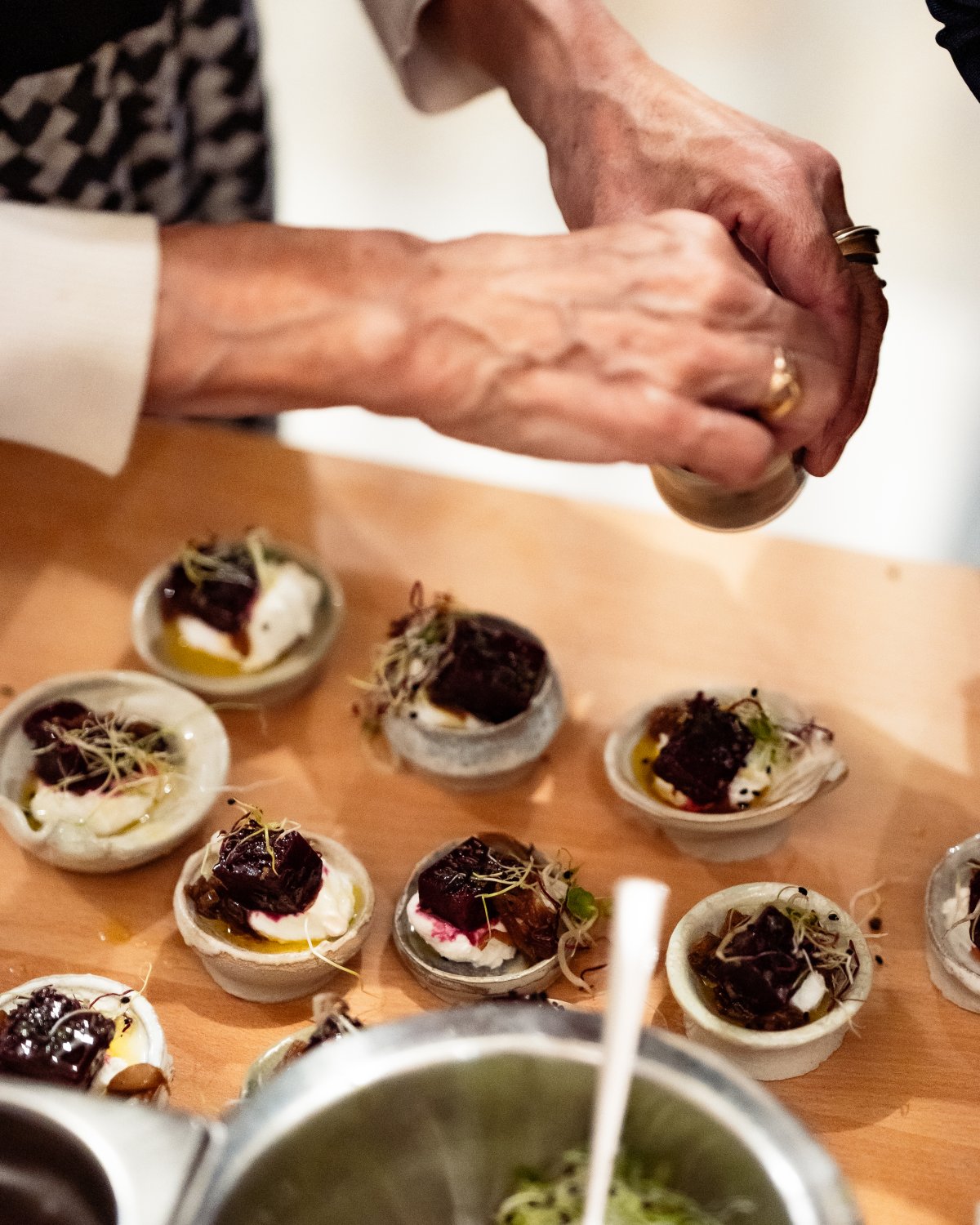
Fresh cheese fluff, marinated beet root with orange cest olive oil, caramelized onions and onion sprouts, isot piperi. Preperation of the food and serving in collaboration with Regula Charamandas-Schibler, Stelios und Pavlos Charamandas, Martina Meier and Julia Felchlin.
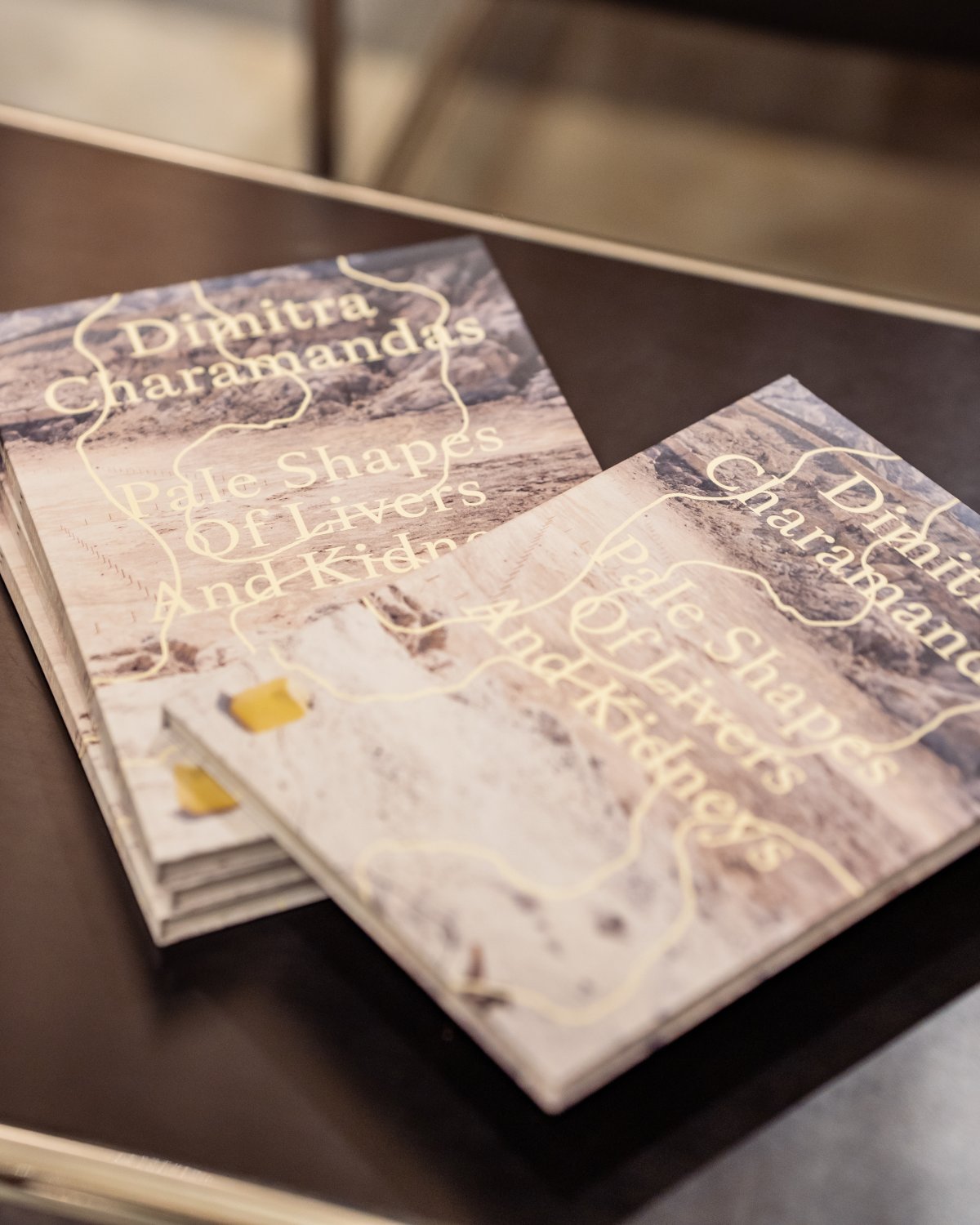
The publication Pale Shapes Of Livers And Kidneys accompanies the exhibition Tides. It holds a collection of text fragments and imagery around the processes leading up to the exhibition. With contributions by Lara El Gibaly and Eleni Riga. Developed in close exchange with curator Meret Kaufmann. Graphic design by Martina Meier, Bureau Mia, Zurich, published by Kunstmuseum Solothurn.
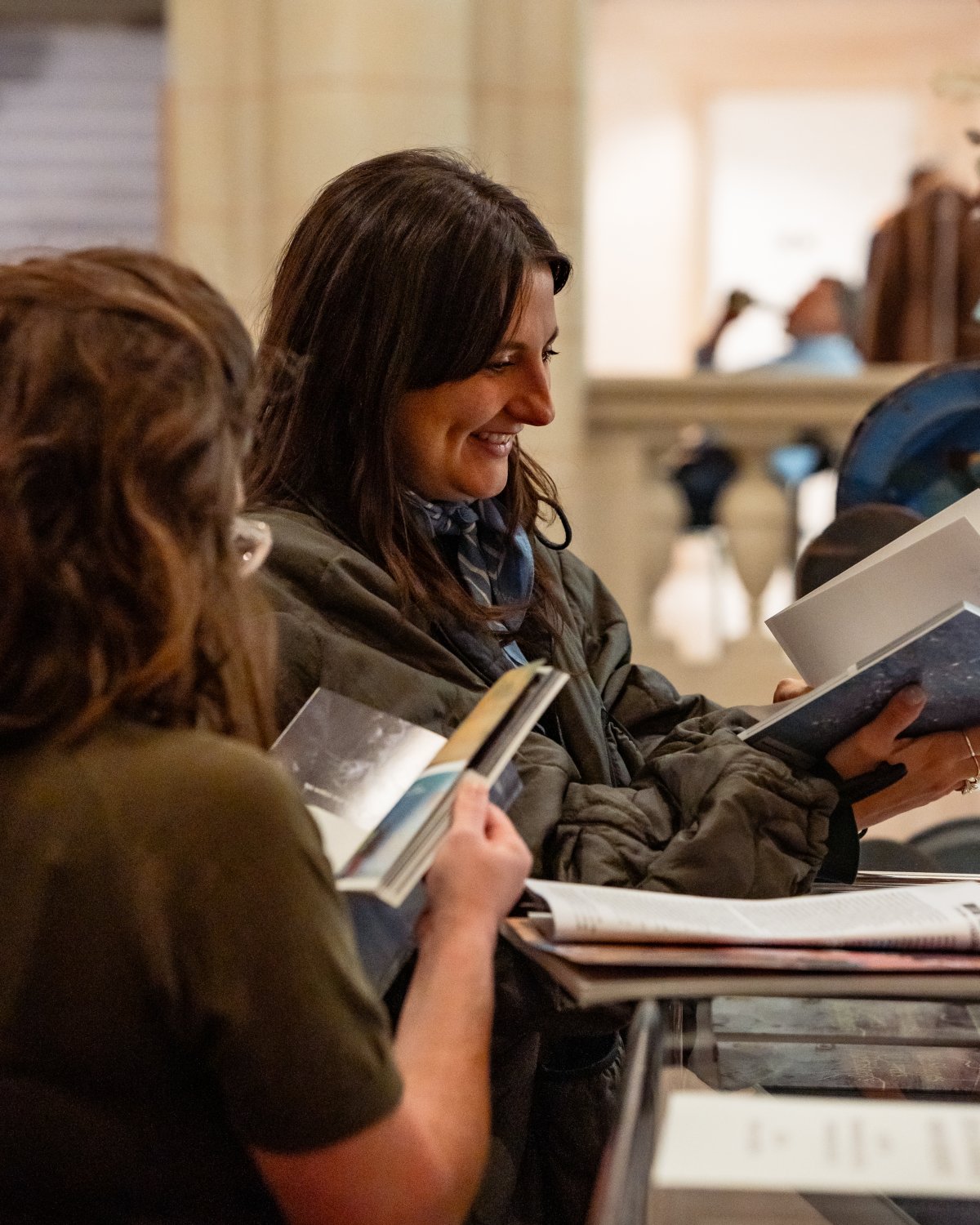
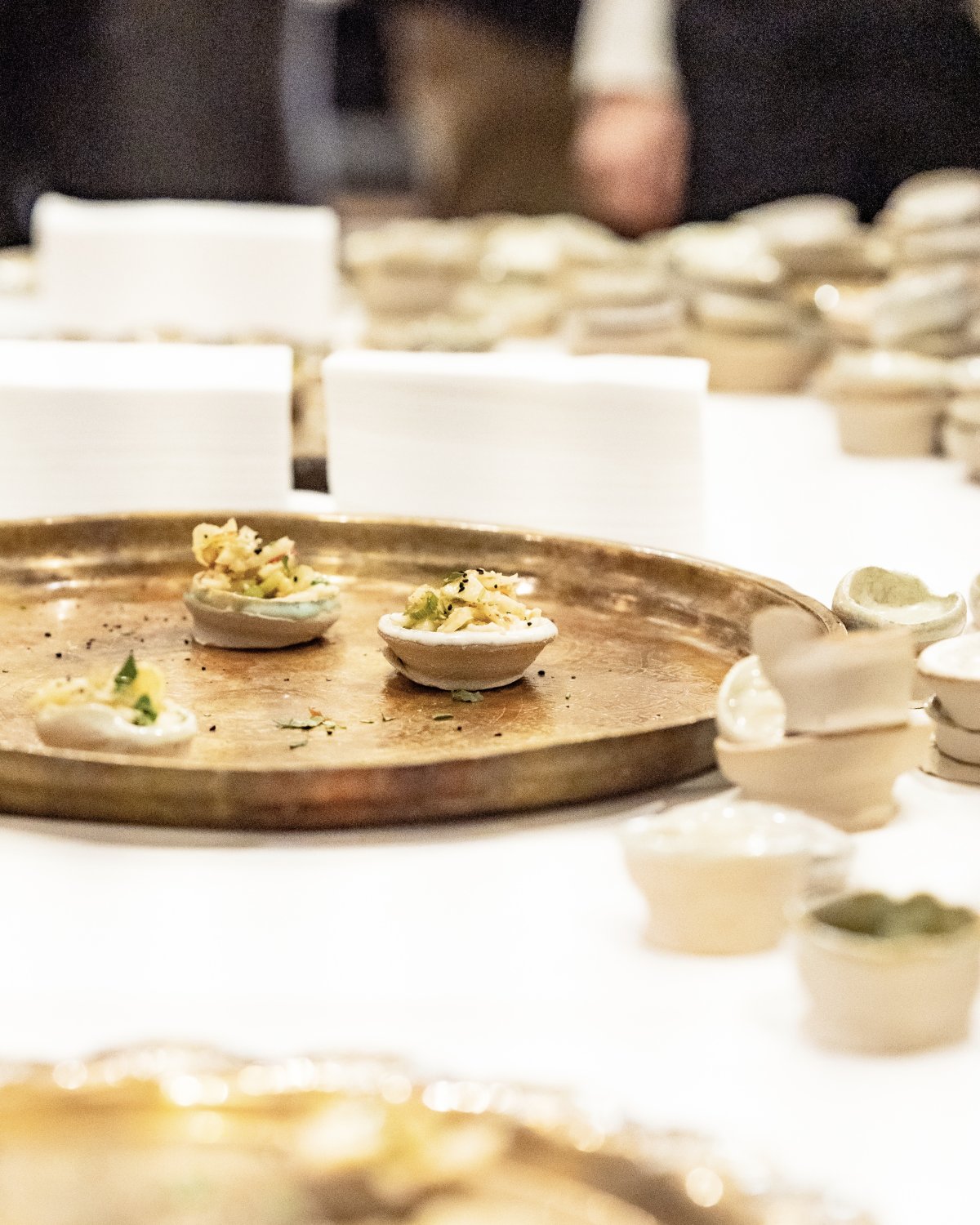
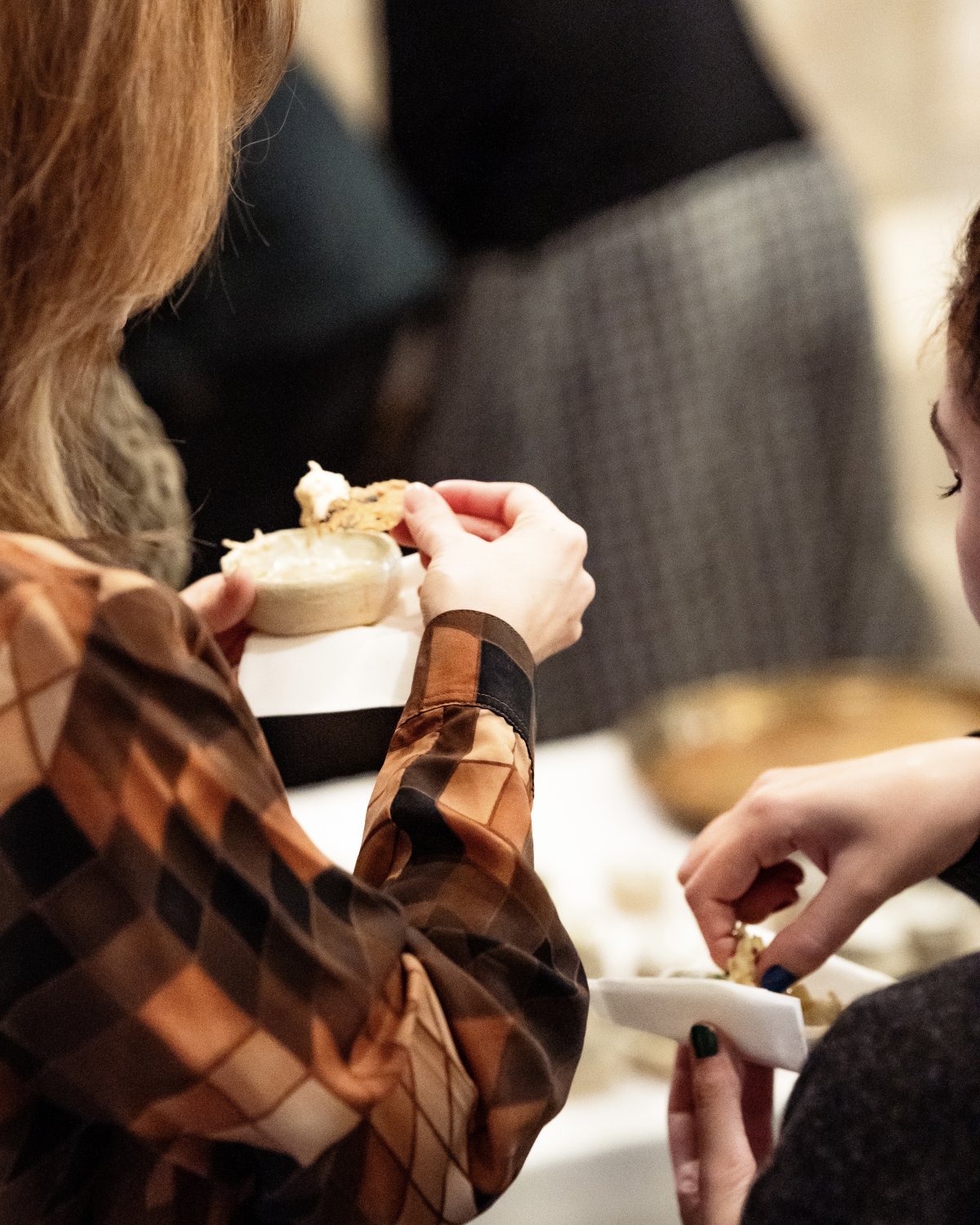
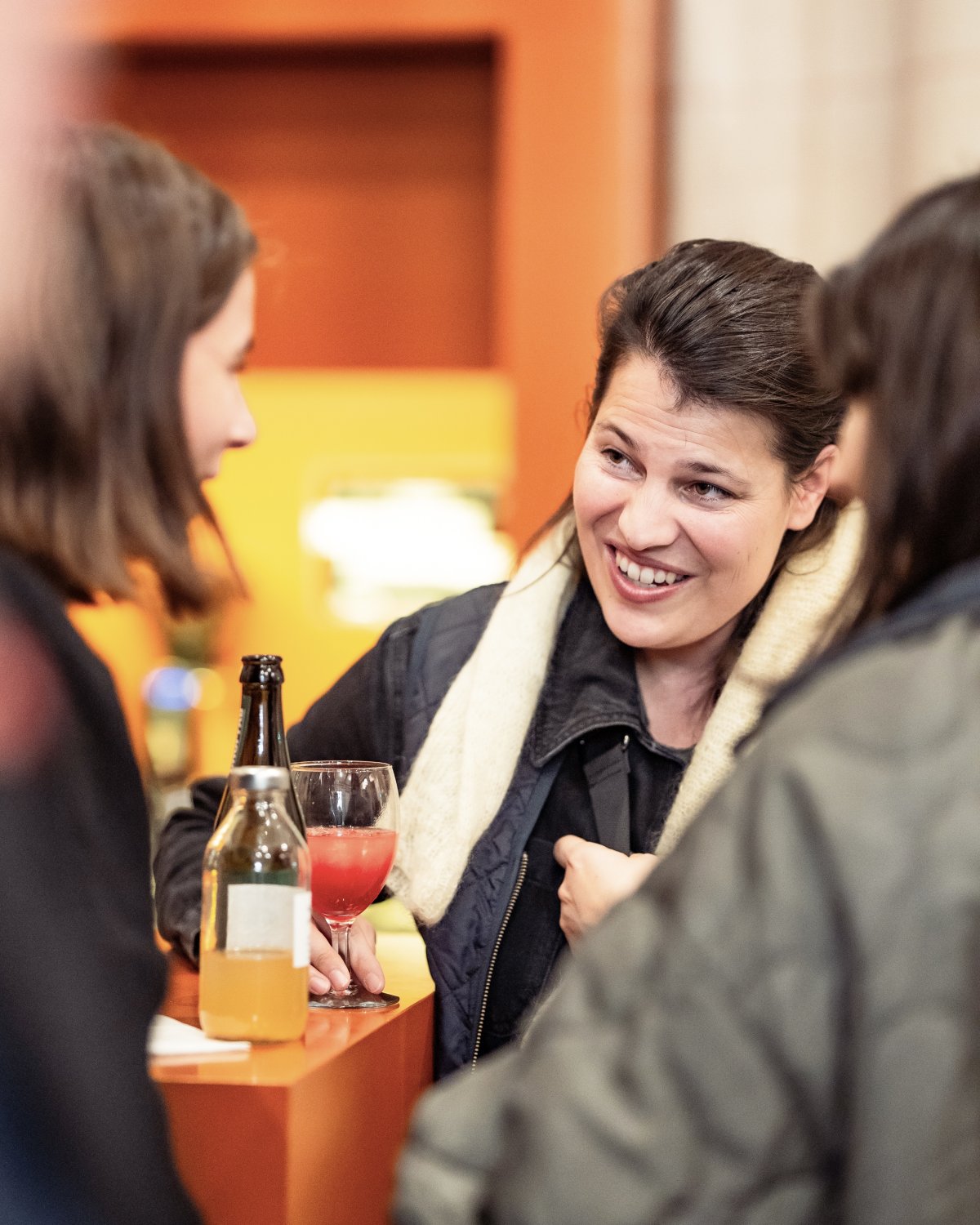

The base for a fennel apple salad with roasted hazelnuts; celery parsley root puree and parsley garlic olive oil.
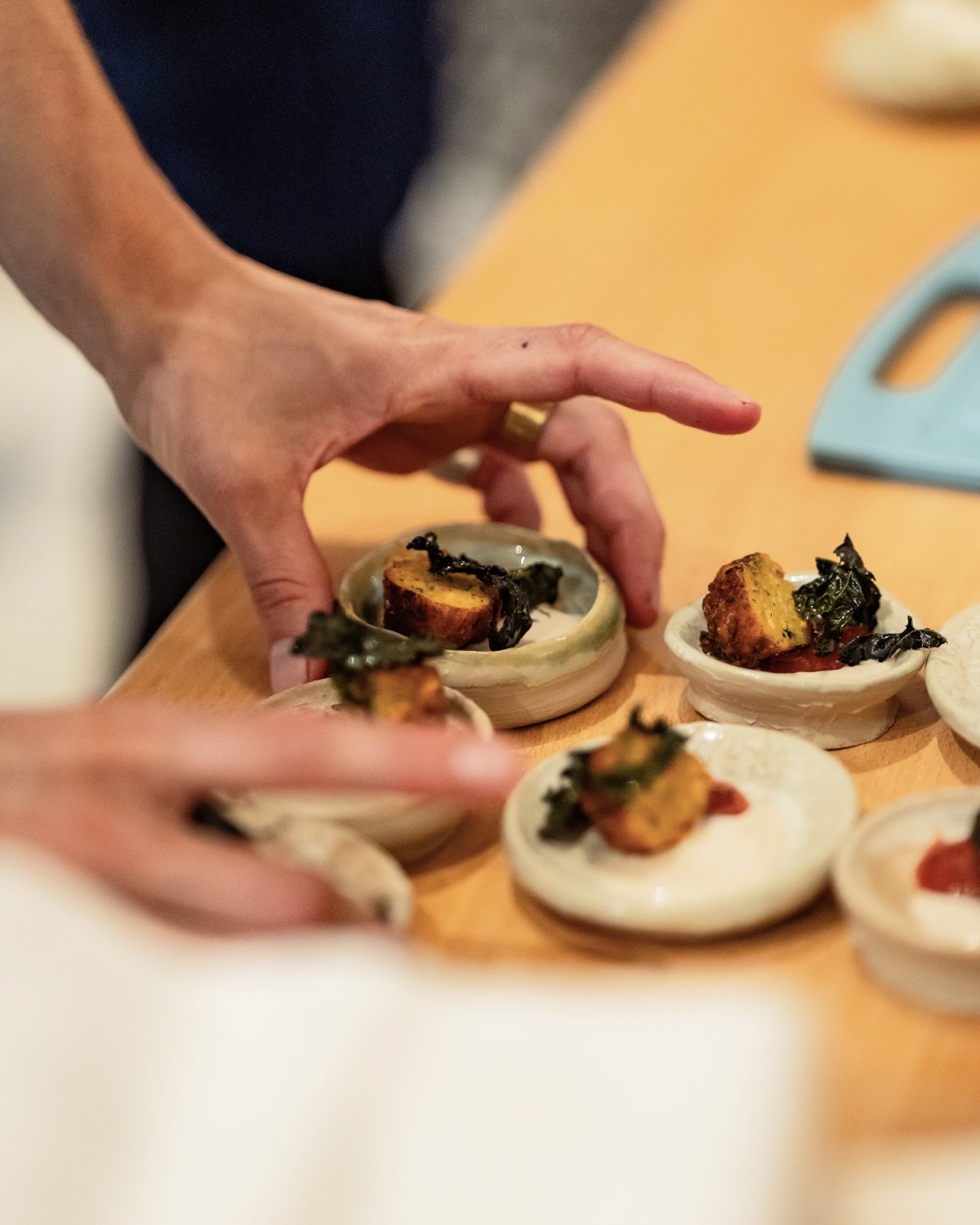
Pumpkin cake with tahini sauce, plum-sea buckthorn coulis and palm kale.
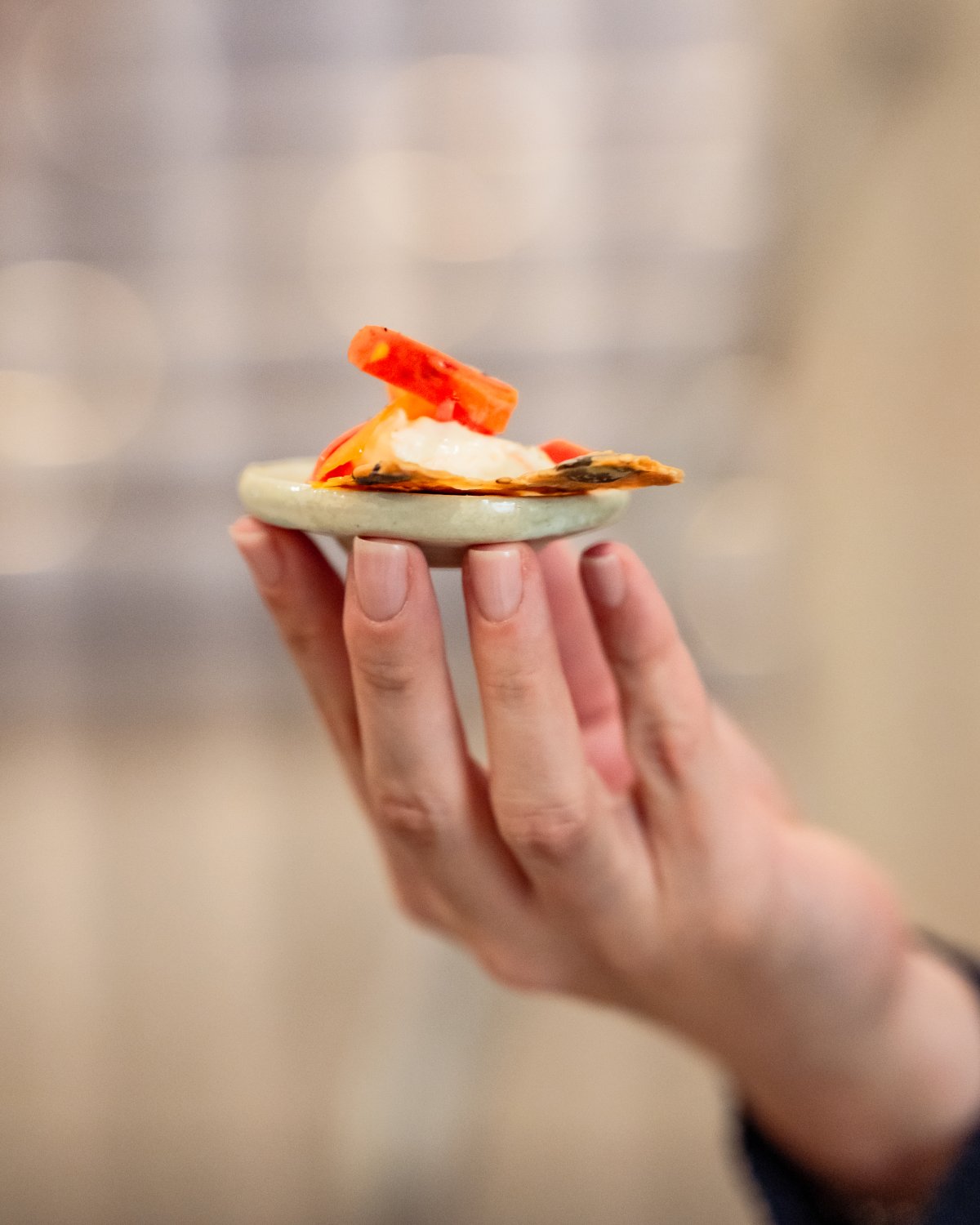
Spelt-pumpkin seed flatbread, carrot tzatziki and carpaccio, pumpkin seed oil